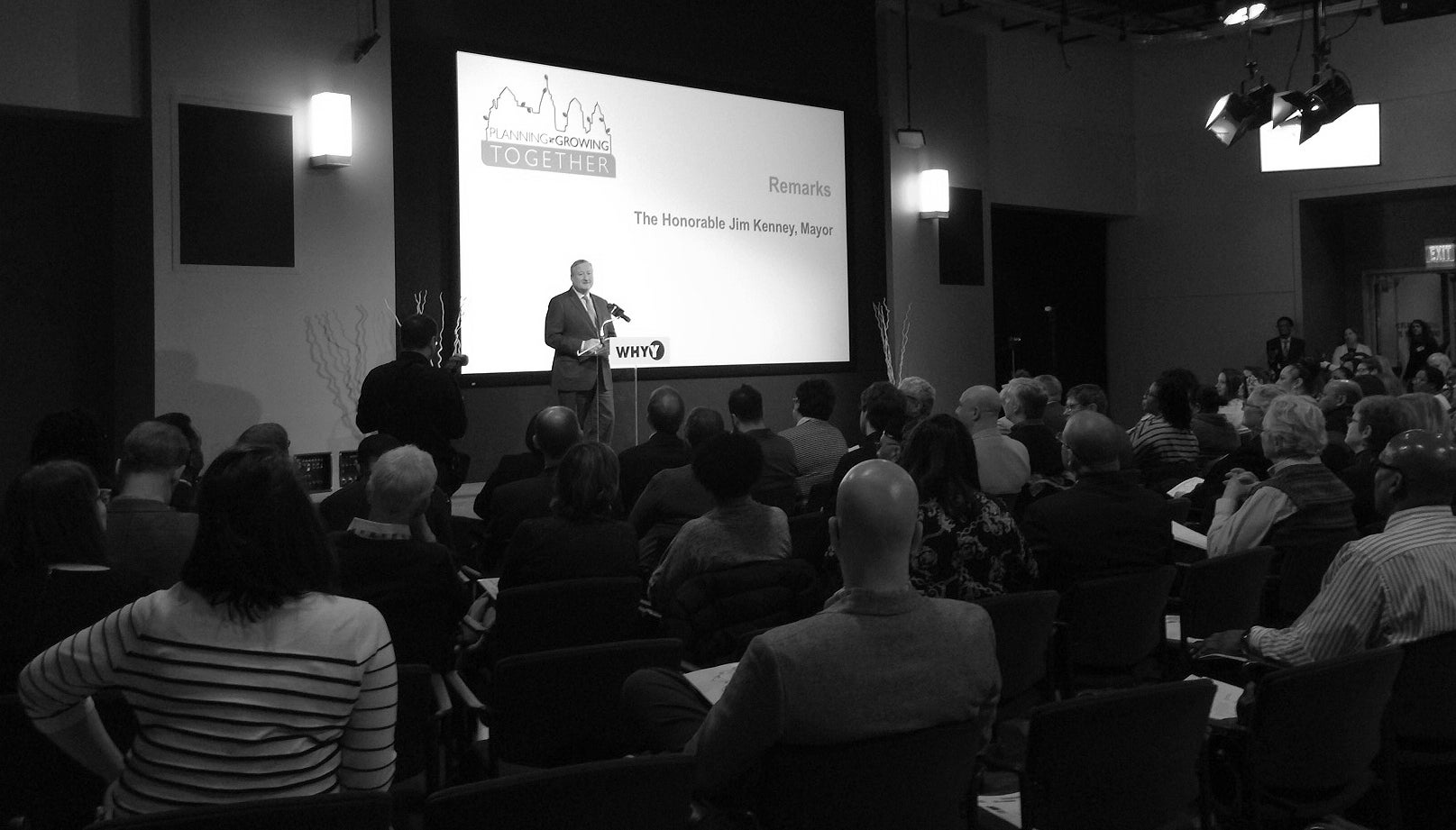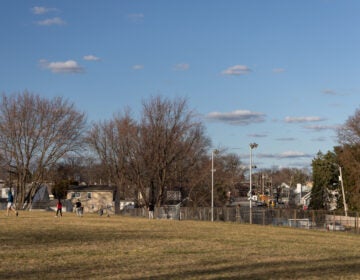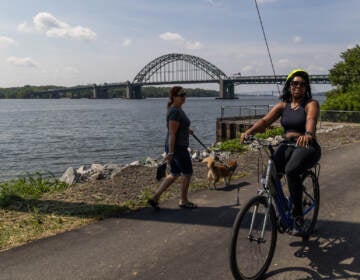Planning Commission celebrates citizen planners, equitable planning

The Philadelphia City Planning Commission’s annual progress report and celebration for Citizens Planning Institute participants held last week was themed “Planning Together Growing Together,” focusing on parks and the power of equitable planning. This year’s graduates of the Citizen’s Planning Institute were cheered on by the mayor, New York City’s Commissioner of Parks, and the Eagles’ Connor Barwin before an audience of planners, community activists, designers, advocates, and City Council members assembled at WHYY.* Exuberance dominated the occasion—although a tremor of trepidation about the incoming presidential administration could be felt throughout the evening.
After opening remarks from WHYY’s Vice President for News and Civic Dialogue Sandra Clark and Philadelphia’s Director of Planning and Development Anne Fadullon, Mayor Jim Kenney stepped into the spotlight. He strayed from his remarks to praise Councilman Allan Domb for his efforts to collect back taxes, Philly Parks Commissioner Kathryn Ott Lovell, and spoiled a surprise appearance by Connor Barwin of the Eagles.
“I have to get to the stuff I’ve been told to say,” the mayor joked. “It’s nice to keep on the script every now and then. I have to thank Donald Trump for one thing, my tweets look less crazy now.”
Kenney’s official remarks dwelt on the promise of parks as a form of community revitalization. In advance of his Rebuild initiative—which will invest $500 million in the city’s neighborhood infrastructure—he echoed the rhetoric of New York Mayor Bill DeBlasio by emphasizing the importance of equity and focusing investment in areas that have long been neglected due to lack of political and economic clout.
He then reiterated Philadelphia’s commitment to the results of the city’s fair housing plan, completed under the Obama administration’s Affirmatively Furthering Fair Housing regulation (AFFH).
“There may be many uncertainties about HUD’s future, but there is no question that Philadelphia will remain committed to ending discrimination in housing,” said Kenney. “It would be silly to pretend that those goals are not made more difficult by what is happening on the federal level. But I think we can all agree that they are certainly not made any less important or critical to our city’s future.”
Kenney then riffed on the importance of keeping a positive attitude in the face of the Trump administration, and reaffirmed Philadelphia’s status as a progressive city that supports civil rights of all kinds. This bled into an appreciation for the Obamas, who he hazarded might be the greatest first family in American history (to cheers from the audience).
A series of speakers followed the mayor, including Parks Commissioner Ott Lovell with a full-throated case for Rebuild. Then came Eagles linebacker Connor Barwin, who talked about why his foundation is motivated to invest in neglected recreation resources, like Smith Playground in Point Breeze and Waterloo Playground in Kensington.
“Sports gave me a real look into what life is like in some of these tough neighborhoods,” said Barwin, whose father has worked as a city manager most of his life. “I grew up in an inner ring suburb of Detroit, but I played basketball in inner-city Detroit. For about 10 years I got to see what life was really like for some of those kids and I think that had an effect on me. Once you see that it changes you.”
The final speaker of the night got his football affiliation out of the way at the top of his speech. New York City Parks Commissioner Mitchell J. Silver is a Giants fan of course (he’s a native of the city), but he assured the audience they could bond over a mutual hatred of the Dallas Cowboys.
New York City’s park system is vast and Silver then rolled out the stats to prove it. 2,000 parks in the system, 14 miles of beaches, 650,000 street trees (which the department is responsible for) and 10,000 acres of natural area. All told, parks compose 14 percent of the city while streets and sidewalks represent another 26 percent—placing 40 percent of NYC in the public realm.
Silver spoke to the priorities that he and Mayor DeBlasio share with Jim Kenny when it comes to equitable park funding. He highlighted the major new initiatives of the administration, which includes a targeted program of $285 million to transform 60 parks that have been historically neglected. The sites were selected using a data-driven approach, focusing on which parks had received less than $250,000 in the previous twenty years.
The investments were decided outside of traditional avenues, which Silver said he found to be too often at the mercy of community groups with the most free time, resources, and political wherewithal to attend meetings.
“I don’t want to plan for who is in the room, I want to plan for the demographics of the whole neighborhood,” said Silver. At another point he explained, “we used a data driven approach, not the political approach, to decide where [funding] had to go and uncover where inequity was taking place.”
Another initiative is titled Parks Without Borders, and seeks to make parks flow more seamlessly onto the sidewalks, streets and into the surrounding neighborhood. He paraphrased Frederick Law Olmsted to drive home his point; who apparently envisioned the sidewalk spaces around parks as “outer park” areas. That’s precisely what Silver’s plans would do.
The project aims to remove defensive fixtures at park edges, like fences installed during higher crime eras. Many of these fortifications have little practical value and are instead more about the theater of security. By reducing the presence of these ugly old edifices, the parks are meant to look more welcoming and accessible, and ultimately feel safer.
Silver concluded his speech by shifting focus to the bigger picture, reinforcing Mayor Kenney’s statements of fortitude in an uncertain time.
“I know we were talking a lot about the election but I wanted to share something’s that’s changed my life,” said Silver in conclusion. “When tough times come, you have two choices, you can be bitter or better. I know you’ll make the right choice.”
*WHYY was a Planning Together Growing Together event partner.
WHYY is your source for fact-based, in-depth journalism and information. As a nonprofit organization, we rely on financial support from readers like you. Please give today.







